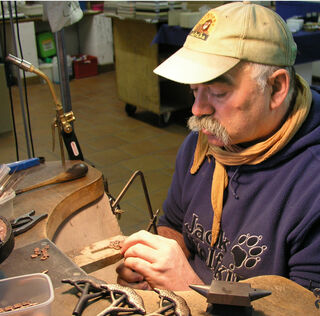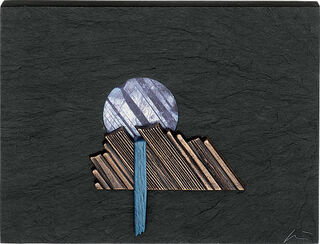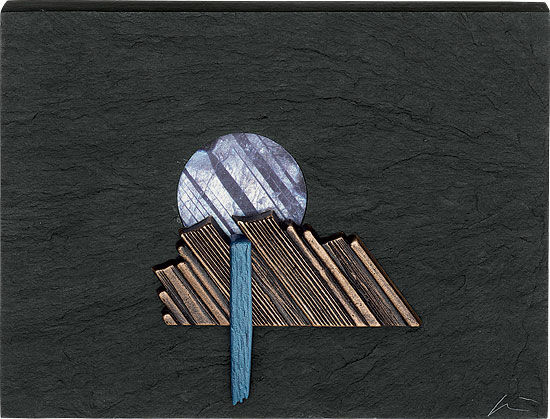Wall object "Impressions from the Apennines III"
Wall object "Impressions from the Apennines III"
Quick info
slate + bronze | size 20 x 15 cm
Detailed description
Wall object "Impressions from the Apennines III"
Börner's Apennines series is based on impressions from his travels and hikes through the central Italian mountain range. Wall object made of slate and patinated bronze. Sun made of bronze, polychromed in pegmatite colours. Waterfall in bronze with an airbrush finish. Catalogue raisonné no. 467. Size 20 x 15 x 2.5 cm (w/h/d).
This object is part of the following sets

About Klaus Börner
Born in 1951 in Hildesheim, Germany, the goldsmith and sculptor Klaus Börner is a loner, an individualist, and a solitary artist who does not subscribe to the current and quickly forgotten art trends but instead follows his own way, close to nature.
Börner uses mainly slate for his unmistakable objects. He combines the small rectangular slate panels with materials such as bronze, steel, brass and sapphires. They combine with the fine lines carved into the slate to create enchanting landscape impressions. The compositions consist of a few pictorial elements, such as trees or animals, allowing a lot of room for imagination.
A sculptural technique where the artwork is cut in from a stone or wooden surface and not modelled.
There are different degrees of relief depending on the degree of projection. The range includes low relief/bas-relief and high relief. The sunk relief is a common form of reliefs in Ancient Egypt, in which the depicted scenes were cut into the stone or wood surface.
Among the most famous reliefs are the works of the Florentine master Lorenzo Ghiberti. Among other artworks, he created the pair of gilded bronze doors of the Baptistery in Florence, called by Michelangelo the "Gates of Paradise".
A plastic work of sculptural art made of wood, stone, ivory, bronze or other metals.
While sculptures from wood, ivory or stone are made directly from the block of material, in bronze casting a working model is prepared at first. Usually, it is made of clay or other easily mouldable materials.
The prime time of sculpture after the Greek and Roman antiquity was the Renaissance. Impressionism gave a new impulse to the sculptural arts. Contemporary artists such as Jorg Immendorf, Andora, and Markus Lupertz also enriched sculptures with outstanding works.



